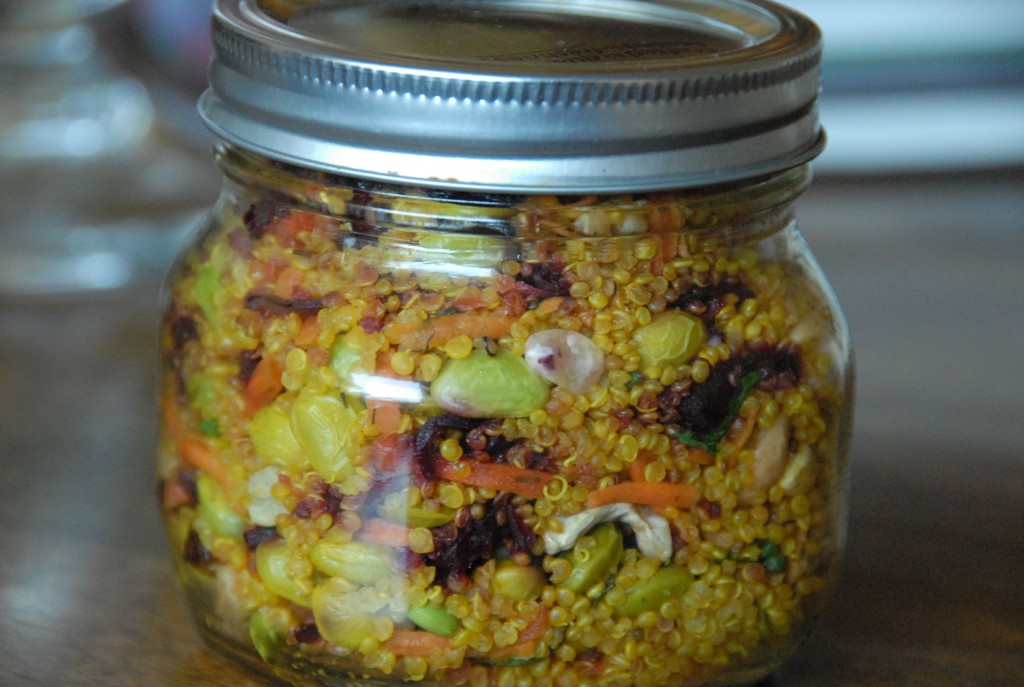As you know, ramen is all the rage. It has been for a while now. Ask anyone where to get the best ramen and they will likely have a very passionate response. In fact, finding the best ramen has almost become an urban sport, the winner gaining social status, emphatic pride, and maybe even a few dates.
Unfortunately, when something becomes insanely popular, it can also become insanely expensive. Not all ramen spots are pricey, but there are certainly a lot of pricey options out there. What if you are just as obsessed with ramen as everybody else, but are shackled by your budget?
We are here to tell you that making ramen does not require alchemy—especially with the super power of delicious kimchi. So why not make your own?
Like an embedded reporter, I photographed as a friend made ramen for dinner. I pretended to be experimenting with a new camera as I lined up the ingredients and snapped away. Herein these photos lies the secret to making delicious, easy and inexpensive ramen that doesn’t come in a microwavable cup.
When I walked in the house I noticed two things immediately: An amazing aroma and my growling stomach. The broth had been simmering for some time before my arrival.
This particular cook was rather secretive about his broth, I think because his strategy was to add a little of this, and add a little of that, until the flavor reached its zenith. He did however excitedly use some juice from Ozuke’s Kale & Collards Kim Chi. He poured it right into the broth, right in front of my camera.

Not pictured: How incredible the house smelled as the broth was simmering.
As I arranged the ingredients that were set out for the meal to “try out my new camera,” there were hints of what the broth contained. Beside the kimchi you’ll notice Bragg’s Liquid Aminos, Sriracha, natural rice vinegar, white pepper, turmeric, black sesame oil, and even Jamaican Jerk seasoning.

We can also see almost everything else that the ramen will include once it is plated: ramen noodles, ginger root, garlic cloves, shallots, carrots, radishes, a lime, a jalapeno, green opinions, cilantro, and shitake mushrooms. Not pictured: four eggs and one cucumber.
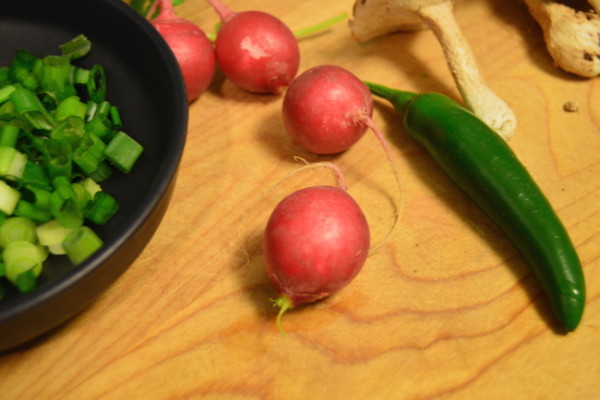
Isn’t there something so dangerously fun about jalapenos?
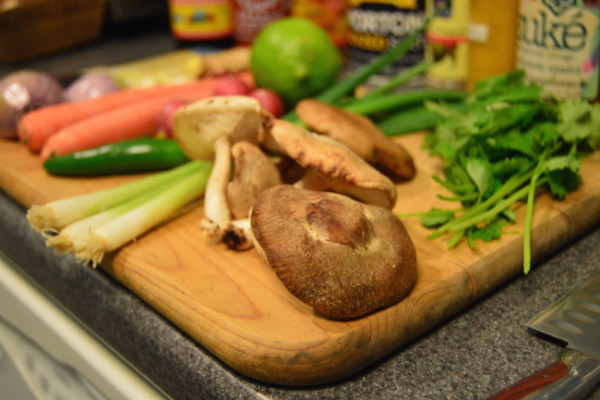
I confess I didn’t see what role the ginger played in the meal, but I suspect it was used in the amazing broth.
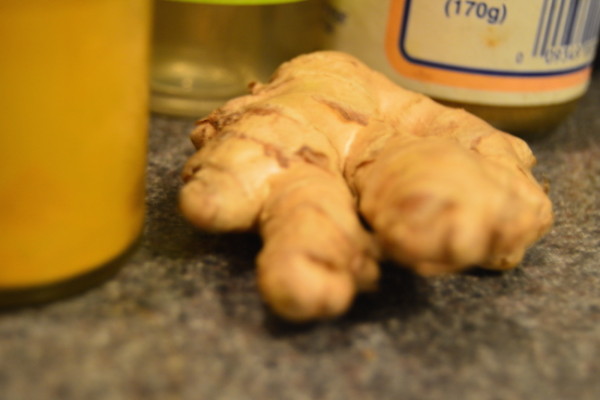
While the broth continued to simmer, our chef of the evening grabbed a knife. He cut up the green onions, the carrots, the radishes, the mushrooms, the cucumber, the jalapeno, the shallots, and pulled the leaves from the cilantro.


After that, there was some cooking to do. Four eggs were cracked and scrambled with black pepper.

After that, there was some cooking to do. Four eggs were cracked and scrambled with black pepper.


After all the prep was done, the stage was set like this. Everything is fresh and simple, the signature of a good, healthy meal.

As our chef for the evening began to plate the food, it was confirmed that he was an artist. He took his time laying each ingredient on each plate at a time so that the patterns matched from plate to plate.
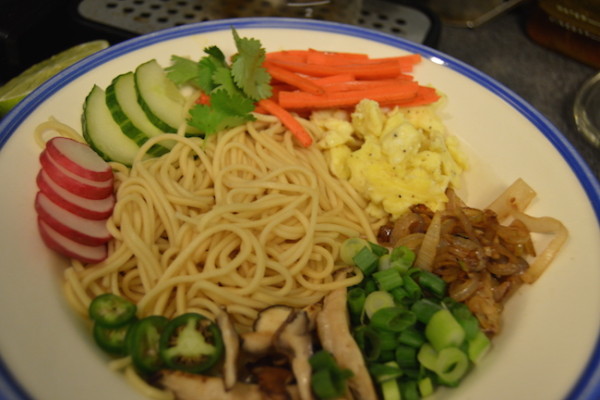
And after everything was arranged just so, he poured in the broth we’d been salivating over, making each dish almost complete. The cherry-on-top to this ramen dish was our Kale & Collards Kim Chi—a grand finale indeed.

Yes, it was delicious.
Now let’s review. Making a delicious ramen meal at home is something all of us can do. There is very little cooking involved, there is ample room for creativity, the ingredients are simple and few, and as long as kimchi is involved, you’re going to love it














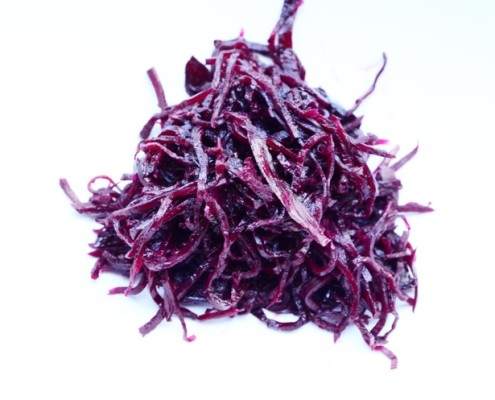















 Red Rice Make this recipe once, and I promise you, your family will ask for more. My daughter, Kailee, would never let a beet near her lips in any other way! Ingredients Butter or olive oil, to taste 1 jar Ozuké the best pickled things Beets, Dulse & Kale 3-4 cups rice, cooked 1 teaspoon garlic (or to taste), minced Toasted sesame oil Optional: sprouts, kale, fried eggs Directions Put butter or olive oil in a pan over medium heat. Add one full jar Beets, Dulse & Kale. Sizzle for a bit, then add cooked rice. Stir over medium heat until everything mixes together. Add minced garlic and drizzle with toasted sesame oil. We serve this rice with a fried egg on top with sprouts and baby kale on the side. You can always snazz this up with another kind of protein and call it dinner. —Mara King, Esoteric Food Company
Red Rice Make this recipe once, and I promise you, your family will ask for more. My daughter, Kailee, would never let a beet near her lips in any other way! Ingredients Butter or olive oil, to taste 1 jar Ozuké the best pickled things Beets, Dulse & Kale 3-4 cups rice, cooked 1 teaspoon garlic (or to taste), minced Toasted sesame oil Optional: sprouts, kale, fried eggs Directions Put butter or olive oil in a pan over medium heat. Add one full jar Beets, Dulse & Kale. Sizzle for a bit, then add cooked rice. Stir over medium heat until everything mixes together. Add minced garlic and drizzle with toasted sesame oil. We serve this rice with a fried egg on top with sprouts and baby kale on the side. You can always snazz this up with another kind of protein and call it dinner. —Mara King, Esoteric Food Company